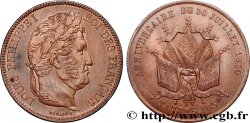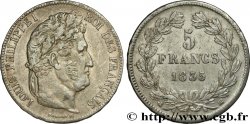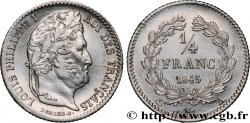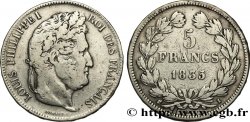E-auction 290-210732 - fme_381427 - LOUIS-PHILIPPE I Médaille, Statue du général Kléber
You must signin and be an approved bidder to bid, LOGIN TO BID. Accounts are subject to approval and the approval process takes place within 48 hours. Do not wait until the day a sale closes to register. Clicking on « bid » constitutes acceptance of the terms of use of cgb.fr private e-auctions.
Bids must be placed in whole Euro amounts only. The sale will start closing at the time stated on the item description; any bids received at the site after the closing time will not be executed. Transmission times may vary and bids could be rejected if you wait until the last second. For further information ckeck the E-auctions F.A.Q.
NO BUYER'S FEE.
NO BUYER'S FEE.
| Estimate : | 50 € |
| Price : | 30 € |
| Maximum bid : | 31 € |
| End of the sale : | 05 November 2018 18:50:30 |
| bidders : | 5 bidders |
Type : Médaille, Statue du général Kléber
Date: 1840
Mint name / Town : 67 - Strasbourg
Metal : bronze
Diameter : 59,5 mm
Orientation dies : 12 h.
Engraver EMMERICH C. F. (Strasbourg)
Weight : 86 g.
Edge : lisse + corne BRONZE
Puncheon : corne BRONZE
Coments on the condition:
Refrappe en excellent état de conservation avec une agréable patine brossée
Obverse
Obverse legend : STRASBOURG / 1840.
Obverse description : Vue de la ville de Strasbourg.
Reverse
Reverse legend : J. B. / KLEBER / NÉ / À STRASBOURG / LE 6 MARS / 1753 // GÉNÉRAL / EN CHEF / EN ÉGYPTE / MORT AU CAIRE / LE 14 JUIN 1800..
Reverse description : Statue de J.-B. Kleber.
Commentary
Médaille signée C. F. EMMERICH F à l’exergue au droit et C. F. EMMERICH F. - P. GRASS STATUAIRE au revers. Le socle de la statue est inscrit “A / KLEBER / SES FRERES D’ARMES / SES CONCITOYENS / LA PATRIE 1840”.
Philippe Grass, né à Wolxheim (Bas-Rhin) le 6 mai 1801 et mort à Strasbourg le 9 avril 1876, est un sculpteur français.
La place Kléber est la principale place publique du centre-ville de Strasbourg. Le 14 juin 1800, au Caire, Soleyman el-Halaby, un jeune étudiant syrien, assassine le général Jean-Baptiste Kléber. Le commandant suprême de l’armée d’Égypte est alors au faîte de sa gloire : il a remporté, trois mois plus tôt, la victoire d’Héliopolis, reprenant la Haute-Égypte aux Turcs et aux Anglais. La gloire de Kléber surpasse alors celle de Bonaparte. Son assassinat le fait passer de la gloire à la légende. La mort de Kléber est donc un souci pour Bonaparte. Pas question donc de lui célébrer des obsèques nationales, ni même de lui donner une sépulture qui pourrait devenir très vite un lieu de pèlerinage républicain. Au Caire, on embaume le corps, on le dépose dans un cercueil de plomb, disposé lui-même dans un cercueil de chêne et on l’enterre au fort Ibrahim.
Finalement, en 1818, Louis XVIII ordonna qu’on transfère les cendres de Jean-Baptiste Kléber à Strasbourg, sa ville natale.
Le corps de Jean-Baptiste Kléber repose depuis le 15 décembre 1838 dans un caveau situé sous sa statue au centre de la place Kléber. La statue, œuvre de Philippe Grass de 1840, représente le général en pieds, tenant la lettre de l'amiral Keith qui demandait la capitulation des troupes françaises. Kléber s'adressa alors à ses troupes : « Soldats, on ne répond à une telle insolence que par des victoires. Préparez-vous à combattre ». L'armée turque acheminée par les Britanniques fut écrasée par les troupes de Kléber. L'inauguration de cette statue fut faite avec une certaine gêne par les autorités de l'époque. C'était en effet le temps de la Monarchie de Juillet et de la réconciliation et l'oubli des conflits passés. La ville organisa donc une grande fête pour l'inauguration de la statue de Gutenberg, sujet consensuel et rassembleur, alors que l'inauguration de la statue de Kléber se fit beaucoup plus discrètement 10 jours plus tôt en juin 1840..
Philippe Grass, né à Wolxheim (Bas-Rhin) le 6 mai 1801 et mort à Strasbourg le 9 avril 1876, est un sculpteur français.
La place Kléber est la principale place publique du centre-ville de Strasbourg. Le 14 juin 1800, au Caire, Soleyman el-Halaby, un jeune étudiant syrien, assassine le général Jean-Baptiste Kléber. Le commandant suprême de l’armée d’Égypte est alors au faîte de sa gloire : il a remporté, trois mois plus tôt, la victoire d’Héliopolis, reprenant la Haute-Égypte aux Turcs et aux Anglais. La gloire de Kléber surpasse alors celle de Bonaparte. Son assassinat le fait passer de la gloire à la légende. La mort de Kléber est donc un souci pour Bonaparte. Pas question donc de lui célébrer des obsèques nationales, ni même de lui donner une sépulture qui pourrait devenir très vite un lieu de pèlerinage républicain. Au Caire, on embaume le corps, on le dépose dans un cercueil de plomb, disposé lui-même dans un cercueil de chêne et on l’enterre au fort Ibrahim.
Finalement, en 1818, Louis XVIII ordonna qu’on transfère les cendres de Jean-Baptiste Kléber à Strasbourg, sa ville natale.
Le corps de Jean-Baptiste Kléber repose depuis le 15 décembre 1838 dans un caveau situé sous sa statue au centre de la place Kléber. La statue, œuvre de Philippe Grass de 1840, représente le général en pieds, tenant la lettre de l'amiral Keith qui demandait la capitulation des troupes françaises. Kléber s'adressa alors à ses troupes : « Soldats, on ne répond à une telle insolence que par des victoires. Préparez-vous à combattre ». L'armée turque acheminée par les Britanniques fut écrasée par les troupes de Kléber. L'inauguration de cette statue fut faite avec une certaine gêne par les autorités de l'époque. C'était en effet le temps de la Monarchie de Juillet et de la réconciliation et l'oubli des conflits passés. La ville organisa donc une grande fête pour l'inauguration de la statue de Gutenberg, sujet consensuel et rassembleur, alors que l'inauguration de la statue de Kléber se fit beaucoup plus discrètement 10 jours plus tôt en juin 1840..








 Report a mistake
Report a mistake Print the page
Print the page Share my selection
Share my selection Ask a question
Ask a question Consign / sell
Consign / sell
 Full data
Full data



